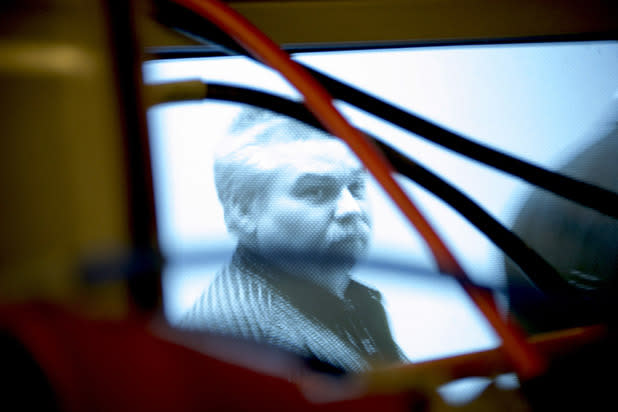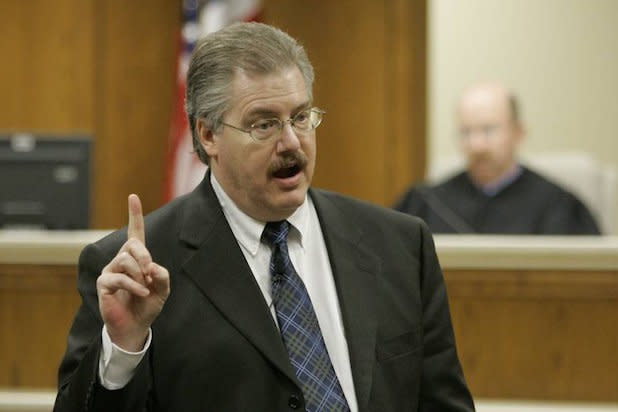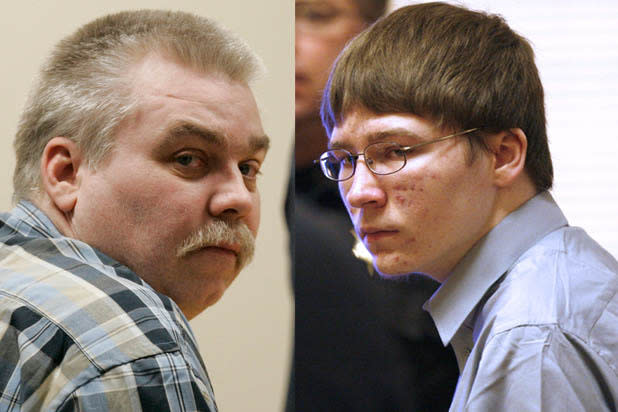The 5 Stages of Your 'Making a Murderer' Addiction (and How to Cope)

Warning: This article contains spoilers for the Netflix docu-series, Making a Murderer
Netflix’s much Tweeted about new show, Making a Murderer, isn’t just a supremely addictive true crime docu-series: it’s also a roller coaster ride of emotions. Over the course of 10 episodes, directors Laura Ricciardi and Moira Demos put viewers through the wringer as they recount the sad, sordid case of Steven Avery, a resident of Manitowoc County, Wisconsin who was convicted in a court of law not just once, but twice under dubious circumstances. Just visit the ever-growing #MakingaMurderer feed on Twitter, and you’ll see adjectives like “heartbreaking,” “sickening,” “appalling” — not to mention the always popular online acronym “SMH” — repeated over and over again as more and more viewers discover, and immediately binge-watch, the series.
Related: ‘Making a Murderer’: Celebrity Fans Freak Out on Twitter
Whether you’re just beginning, in the middle of the 10-episode series, or wrapping up your own Making a Murderer binge, you’ll want to be prepared for an onslaught of intense emotions. Here, we break down the five specific stages of the typical Making a Murderer addiction and the feelings you’ll likely experience Avery’s story unfolds episode-to-episode. Here’s an advanced clue: complacency won’t be one of them.
Episodes 1 & 2: Utter Disbelief
Here’s how complex and tangled Making a Murderer is — the first episode, “Eighteen Years Lost,” has enough material to be its own standalone movie. Amazingly enough, though, it’s just preamble for the main story told in the series. In a little over an hour, Ricciardi and Demos recount the circumstances of Avery’s first trial and conviction for 1985 rape he didn’t commit, and how he spent 18 years in prison until new DNA evidence freed him in 2003. Hearing the details of how the Manitowoc County Sheriff’s Department zeroed in on Avery as the prime suspect are truly stranger than fiction, as is his Hail Mary release via DNA testing. But then the closing minutes of “Eighteen Years Lost” deliver the real WTF moment, providing the hint of a murder in the area and a police officer asking: “Do we have Steven Avery in custody?”
Your disbelief at Avery’s misfortune — coming, as it does, as he’s in the process of suing the county for his initial wrongful conviction—will carry into the second episode, “Turning the Tables,” which establishes the mystery that occupies the next nine hours. A young photographer named Teresa Halbach has been murdered, and, according to reports, Steven Avery was the last person she came in contact with, while taking photos of a minivan at the Avery family’s salvage yard for Auto Trader Magazine. It’s a tragedy for the Halbach family, but what’s perhaps even more shocking is the lightning-quick way that the eye of the investigation turns to Steven…
Episode 3 & 4: Rage
Disbelief gives way to anger in the third hour, “Plight of the Accused,” as prosecutor Ken Kratz becomes a bigger player in the narrative and a slew of questionable procedural practices follow in his wake. Kratz also uses the local media to release salacious details about the crime into the public sphere, turning the tide of opinion against Avery before any potential juror even sets foot in a courtroom.
But it’s the fourth episode, “Indefensible,” that will really have you seeing red. At this point, the prosecution decides that Avery’s 16-year-old nephew, Brendan Dassey, might be their star witness, based on testimony that Dassey will claim was coerced out of him by investigating officers. (Damning videotape evidence of the interview supports his claim.) Whatever doubts or uncertainties you might have about Steven’s involvement in the alleged murder, Brendan’s treatment by law enforcement, prosecutors and even his own defense attorney is unconscionable, especially in light of his age and reported I.Q. of 70. Fifteen minutes in, there’s a scene where investigator Michael O’Kelly, who is theoretically part of the boy’s defense team, badgers him into another false confession. You may have to repeatedly pause this sequence to prevent yourself from throwing your television out the window.

Episodes 5, 6 & 7: Fear & Loathing
Steven’s 2006-2007 trial takes center stage in the next three episodes, “The Last Person to See Teresa Alive,” “Testing the Evidence” and “Framing Device,” and each one gives you fresh reason to be afraid of America’s justice system when those in power appear to be allied against you. At least Steven has a pair of excellent (and high-priced) defense attorneys in his corner: Jerome Bunting and Dean Strang, both of whom have emerged as the breakout stars of the series, with Strang even receiving a shout-out from Alec Baldwin.
But even this dynamic duo admit that they’re fighting an uphill battle by arguing police corruption as a defense. These three episodes feature a parade of unlikeable prosecutorial witnesses, including highly suspicious officers David Lenk and Andrew Colburn and clumsy DNA analyst Sherry Culhane. Even the presiding judge, Patrick Willis, makes decisions — like allowing prosecutors to present the results of a questionable FBI-commissioned blood test — that cause him to come across as more dastardly than any comic book super villain.
Episode 8 & 9: Despair
If you couldn’t resist Googling ahead, you already know the sad ending of Episode 8, “The Great Burden,” when jurors return a “Guilty” verdict for Steven on two of three counts. It’s still depressing in the moment, though, particularly when you’re informed that seven individuals on the jury initially voted “Not Guilty,” before having their opinions swayed by three particularly obstinate jurors.
Prepare to have your soul crushed into little pieces at the conclusion of the next episode, “Lack of Humility,” when a jury improbably finds Brendan guilty as well, despite the valiant attempts by his public defenders to point out the many ways he was failed by the system. Like his uncle, the 16-year-old teen is handed a life sentence, although unlike Steven, he’ll get a shot at parole… in 2048, when he’ll be 59.

Episode 10: Motivation
Don’t look for any happy endings in “Fighting For Their Lives,” which outlines events from 2007 to 2015. As of now, both Steven and Brendan are both still in prison, their multiple appeals and requests for re-trials all denied by the Wisconsin courts, including the state’s Supreme Court. In Brendan’s case, at least, there’s a small glimmer of hope: his current legal team are attempting to take his case to the federal level by claiming his constitutional rights were violated. Meanwhile, Steven is currently acting as his own defense counsel, having exhausted his access to public counsel and his funds to hire private lawyers.
The fact that they haven’t given up means that you don’t have to either. If you’d like to put your feelings into action, several online petitions urging politicians to intervene for Steven Avery are currently circulating on Change.org and WhiteHouse.gov. The non-profit legal organization, The Innocence Project, also says it is “looking into some aspects of [Steven Avery’s] case” and accepts donations. The Wisconsin Innocence Project, which provided crucial assistance in overturning Avery’s 1985 conviction, also accepts donations. Making a Murderer also has an active community on Reddit, with multiple threads devoted to discussions of the show itself, as well as information regarding the case. Last, but not least, Twitter feeds have been set up for both men, @HelpStevenAvery and @BDassey, providing forums where viewers can express support, along with all of the above emotions.
Making a Murderer is currently streaming on Netflix

